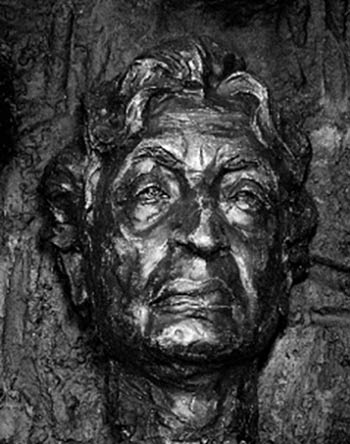Features
A singular modern Lankan mentor – Part II
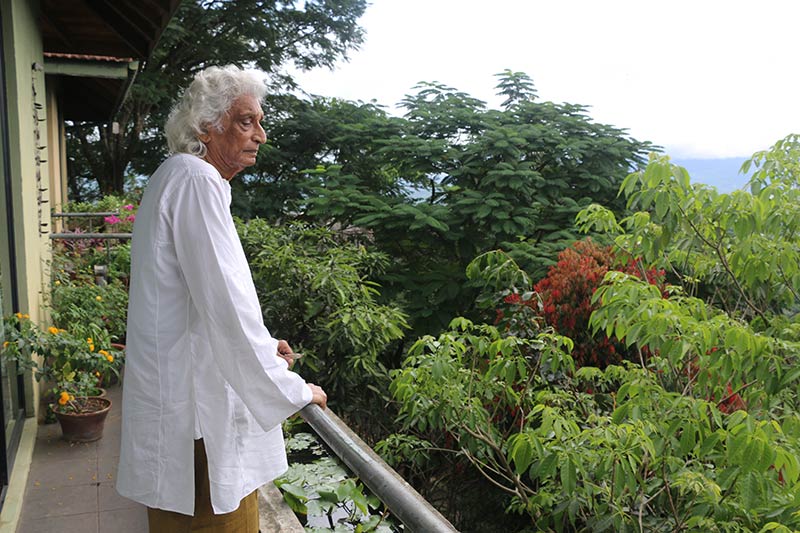
by Laleen Jayamanne and Namika Raby
(Part I of this article appeared in The Island on Friday (31 Jan.)
Women’s Mental Health: Trance/Dance in Folk Rituals
The lecture Namika heard on ‘pregnancy cravings’ (dola duka) among peasant women in a particular village, is one of Gananath’s earliest pieces of research which shows his turn of mind, originality, in taking seriously a compelling female desire which may not have been treated in the scholarly arena with the gravity and seriousness that it warranted. I associate a certain sense of cultural embarrassment on hearing the term ‘dola duka’ in Sinhala back in the day when a pregnant relative of mine craved to eat pieces from a freshly baked (navun) clay pot with its special fragrance. The film shows Gananath’s empathetic ability to pay careful ethnographic attention to a variety of gendered states of mental distress and trauma and their traditional ritualised ecstatic expressions, especially with regard to women, well before some feminist scholars in the West began to be interested in the topic of ‘Women and Madness’ from a Freudian psychoanalytic perspective. Psychoanalytic theory became methodologically important for Feminist Film Theory, which I used in my doctoral thesis on ‘Female Representation in the Lankan cinema’.
A sequence in Dimuthu’s film focuses on the subject of Gananath’s book Medusa’s Hair: An Essay on Personal Symbols and Religious Experience, which is a case history of an old woman called Karunawathi Maniyo (mother). She appears with her thickly matted, long snake-like grey locks which, we are told, were created by her as a mode of existence, entailing a ritualised daily practice of puja at an altar, with images of the fierce Kali with fangs and Durga Ashuramardani (a divine figure of combat capable of violence and great power), to express and assuage her mental distress. However, I did not see an image of Pattini, the ‘good mother’, on her altar.
It is worth noting that both Kali and Durga are not maternal figures and though they were incorporated into the Brahminical Hinduism, they have no consorts and were in origin folk goddesses, according to the historian of ancient India, D. D. Kosambi. It is worth remembering that the first feminist press in English, in India was called ‘Kali for Women’! There is here an evident externalisation of an unusual desire, intelligible within Karunawathi Manio’s social class/group and as such, acceptance of her idiosyncratic behaviour and appearance. It is impossible to imagine such a Medusa-like scary treatment of hair in a middle-class milieu.
Again, there are images of a possessed young woman, Nawala Maniyo, who participates in an exorcist ritual in a trance, eyes glistening between strands of her long tresses masking her face. This reminds me of Gananath’s extraordinarily gripping Case Study, ‘Psycho-Cultural Exegesis of a Case of Spirit Possession in Sri Lanka,’ which we dramatised for the soundtrack of my film A Song of Ceylon (Australian Film Commission, Sydney: 1985). Again, as an ethnographer he demonstrates how the Sinhala-Buddhist folk culture provided symbolic means of collective, public, theatricalised, somatic, expression of profound individual trauma registered in the unconscious of the young possessed woman, Somawathi, and the therapeutic value of these public, social forms of physical expression.
In the early 20th Century Vienna, the Neurologist Sigmund Freud treated young bourgeoise female patients suffering from a new pathology named ‘Hysteria,’ which in turn led him to postulate a theory of the Unconscious and to develop his ‘Talking Cure’ through ‘free-association’, to assuage mental pain. This however was in a privatised and personalised setting in his study; the female patient lying down on a couch speaking in a ‘stream of consciousness’ mode, with Dr Freud as the silent listener, his gaze averted. Freud’s case studies of these patients are also gripping reading, like a 19th Century novel, and they are also ‘ethnographic’ psychoanalytic interpretations of the pathology named Hysteria, a new medical category which entered the Diagnostic Manual.
In contrast, while deeply interested and trained in psychoanalytic theory and methodology at the University of Washington, Seattle, by European specialists, Gananath appreciated and powerfully theorised the public, social nature of Exorcist Rituals (Bali Thovil) and other such therapeutic practices.
Further, he showed how the rituals, based on folk beliefs, were imaginative, performative public events with an ‘audience’ participating in them and their importance as witnesses, for the cure. In these, the female ‘patient’ or woman possessed of demons danced to drum beats in ecstatic trance, resisting through spirited dialogue, the Exorcist (Kattadirala), who embodied patriarchal authority and even physical violence. In these rituals the possessed woman is given a public arena to play (dance) in, and while the ritual has a familiar cultural ‘script’ so to speak, the possessed woman has every chance to improvise and play as she desires or as the demons (all male) possessing her desire.
It is clear through this work that, contra psychoanalysis, the unconscious is not structured like a language and the repressed is insighted to find expression through trance-dance and vocal expression which go against traditional notions of femininity. In ecstatic states the patient is animated by drum beats that touch her nervous system directly and thus the entire body, revealing deep registers of affective trauma, that a purely static, talking cure (while lying down on, what became, that famous couch, now preserved in the Freud Museum in London) could not possibly do.
Dimuthu brings all this out lucidly, not only with the questions he poses to Gananath but also by placing the relevant photographs or clips within the interview sequences themselves. This montage technique of placing carefully chosen stills and clips from Gananath’s very extensive ethnographic archive, interspersed with the ‘Talking Heads’ interviews, makes the film very lively and watchable. It also teaches us something about the complex theoretical ideas Gananath worked with in an accessible way because of his powers of ‘scientific’ rigorous ethnographic observation, tempered by a Buddhist Humanist empathy and engaging style of writing so rare in scholarship.
Perhaps the film would encourage young scholars to read Gananath’s writing as Dimuthu did even before he entered the University. And I hope it encourages the translation of at least some of his major work. The film is significant in this sense, too, because Gananath did not accept the orthodoxy in his field and questioned received methodologies and theories. His critical mind is truly dazzling in its generosity of spirit and sense of curiosity even so late in his retirement. We hear him say, ‘Even now (then in his 80s, soon to be 95!), I am learning something new every day in the Uva-Wellassa area’ and exhorts us also to make that a goal. Yes, let’s!
Gananath’s use of the idea of the unconscious, via Freudian Psychoanalysis, in his ethnographic theorisation of rituals was enabling methodologically. It provided a key theoretical concept for understanding the actions performed by men and women under immense mental and physical duress, which went against the mandated gender norms of the traditional culture. I remember in the 1980s how Gananath was severely criticised by Marxists for ‘indulging in and validating superstitious folk beliefs and practices’ among the so called, ‘ignorant peasantry’.
The whole nexus of folk beliefs and cultural practices, including aspects of Hinduism, and their integral articulation with Buddhism, practiced as a popular religion with rituals and dramatic enactments by these rural communities was dismissed in a simplistic rationalist critique, as myth, hence false. But what has survived time, as an anthropologically cogent theoretical analysis based on meticulous, imaginative ethnographic work, is Gananath’s central argument about the hybrid, generous, inclusive nature of Buddhism as a religion, practiced in the robust, open folk traditions, by the peasantry. Dinidu gives considerable time to Dr Kumudu Kusum Kumara, who explains Gananath’s very detailed, complex argument and research with clarity and imagination in the film.
Buddhist Humanism or ‘Protestant Buddhism’
Kumudu explains the significance of Gananath’s formulation of the concept of ‘Protestant Buddhism’ introduced by the Theosophist Colonel Olcott in the 19th Century, who schooled the Buddhist revivalist Anagarika Dharmapala in constituting a Sinhala-Buddhist Catechism based on the Thripitakaya (the canonical Buddhist text), fit for school children in Daham Pasal modelled on Sunday School for Christian kids. He explains how this was a rationalising, westernising move, following Max Weber’s thinking here. Gananath’s brilliant coinage ‘Protestant Buddhism’, which was also strongly aligned with the Nationalist Anti-Colonial Movement, rationalised religious practices making them exclusive. A Victorian-English-Protestant-Puritanism thus entered Buddhism in Lanka, making it more akin to Protestantism in Europe which had a very severe moral code. Thereby the inclusive flexibility of the Buddhist folk tradition with its humour and sense of play, is lost along with, crucially, the story-telling tradition based on the Jataka Tales of the Buddha’s many rebirths, parables about ethical behaviour towards all living beings.
With this loss, we are told, the tradition of Buddhist Humanism, with its values of compassion as exemplified in these stories teaming with natural life and animals, too, also disappeared. Further, through this loss the ethical values nurturing and sustaining ‘a Buddhist Conscience’ were also lost, he argues. We are shown (via images), how the painterly folk tradition in Temple Murals and the literary sources, song, poetry (kavi), trance-dance, drumming, dramatic enactments within the folk traditions (as distinct from the official chronicles of the Mahavamsa and Deepawams), offered an alternative vision of Buddhism as practiced by the peasantry.
We learn that in the folk tradition Dutthagamini repented killing Elare the Tamil king and conscience struck, he attempted reparation and contrition, unlike the patricidal king Kashyapa who escaped into a hedonist life in the rock fortress of Sigiriya. Kumudu says that Gananath argued his case by reading the folk archive, of images on Temple walls and anonymous folk texts (Panthis Kolmura, a large corpus of 35 long poems, some of which he translated and also sang, Kadaym poth or Boundry texts and Vitti poth or Event books), which were authorless and title less work of the people, for the people and by the people. The film helps us to understand that it is this folk tradition, cultivating empathy and an ethical conscience, a capacity to be contrite, that has been lost within the post-independent ethno-nationalist version of official Protestant-Sinhala-Buddhism, with state patronage. This imported ideology of the English speaking coloniser is then presented as the ‘pure original Buddhism’ shorn of local superstition, hybrid folk tales and beliefs and rituals, rejected as ‘unBuddhist’. Indologists in turn supported this rationalising move of creating a ‘pure, original Buddhism’.
A Case Study
Kareem, a young Muslim man hangs on hooks (attached to a swing-like structure on wheels in a religious procession), as penance at the Kataragama Hindu festival and is also seen dancing in a trance. Gananath explains in his Case Study of Kareem that he was imprisoned in 1961 for assisting in the Army Coup against the Government. One wonders how a humble young Muslim cook got caught up in and imprisoned for a foolish Coup staged by a select group of English-speaking bourgeois gentlemen of Colombo, who were all high up in the armed forces of that era. Daughters of three of these officials who were arrested and served sentences were close friends of mine in school during this time, which heightens a sense of the absurdity of this poor man’s plight. Gananath’s case study of his childhood revealed an authoritarian paternal figure who instilled fear in him. However, he seemed serene and happy in the photographs taken with Gananath after the ritual and even when swinging from the ritual hooks.
Here, I would like to cite Arjun Appadurai’s review of Gananath’s magnum opus, The Cult of the Goddess Pattini because it is not readily available to those outside the academy.
“This is a book of unusual scope, quality, and scholarly significance. Ostensibly a description and analysis of a single cult in Sri Lanka, it is in fact a major symbolic, psychological, and ethno-historical study of practical religion in Sri Lanka, and of the relationship of that island to Indic culture and society. It is the product of two decades of field research by Sri Lanka’s most distinguished anthropological interpreter, and its combination of textual analysis, ethnographic sensitivity, and methodological catholicity makes it something of a blockbuster”.
Dimuthu informed me that Gananath studied six different traditions of the Pattini Cult, starting in the 1950s. Dimuthu and his research team went looking for the priests of each of these traditions named in his book and found that they had died but they did meet a student of Yahonis Pattini Mahattaya of the Rabaliya tradition and of Podi Mahaththaya, H. D. Edwin Pattini Mahatthaya, who is now the only living informant of Gananath’s Pattini research. Edwin Pattini Mahattaya performed aspects of the Pattini Cult for Gananath at his request for the sake of photo documenting it for his book. His son Tilak is seen dancing as Pattini in the Dimuthu’s film. Seeing him becoming Pattini (after his ritual investiture), even in an all too short clip, is among the high points of this film for me, because we see a profound metamorphosis of this young male ritual dancer into a female archetype, Pattini, the only Mother goddess of Lanka, in an inspired rhythmic play with codes of gender and beyond to reach an ecstatic body and spirit – words fail me. What we can also see is the profound gestural, rhythmic, spiritual transmission of this syncretic tradition across generations, across the abyss of death itself.
Pattini’s origins are in Kannagi, a heroic human figure from the Tamil Epic Silappadikaram, who is worshiped as a mother goddess, Kannagi-Amman, in India and in the East coast of Lanka by Tamils who still observe matrilineal descent (a system of tracing kinship through a person’s female ancestors), according to Gananath. The significance of this for gender and family relationships would be of particular interest to feminists. There is a large modern Bronze statue celebrating Kannagi in Chennai, India and colourful plaster ones and paintings in Hindu temples in Lanka, seen carrying her iconic anklet. (To be concluded)
Features
Bharath Rang Mahothsav Parallel Festival in Colombo
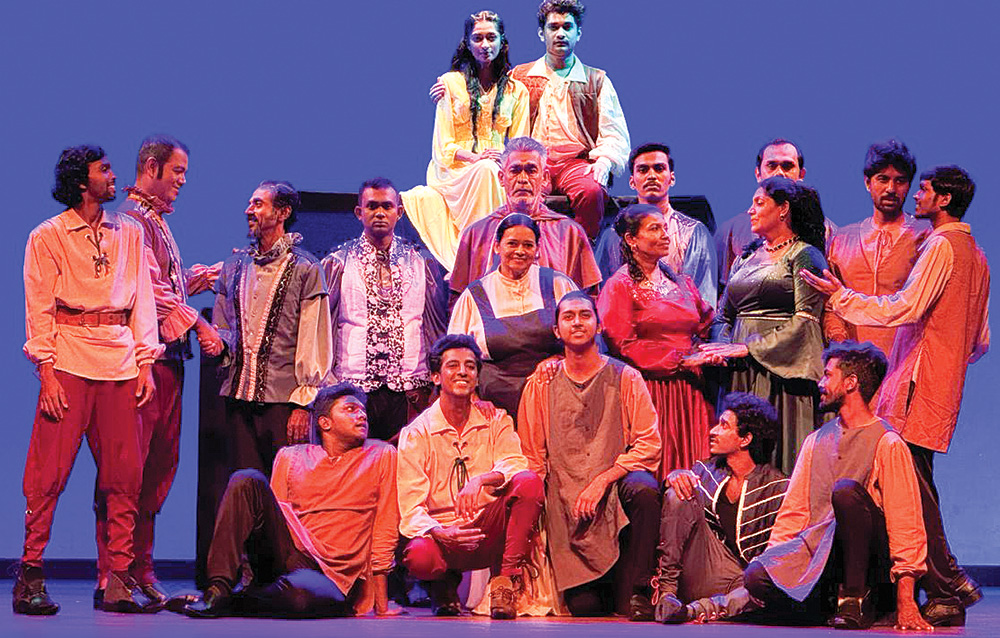
International Theatre Festival of India
In Collaboration with
Swami Vivekananda Cultural Centre, Colombo
University of Visual and Performing Arts, Colombo 6-9 February 2025
Tower Hall Theatre, Colombo
Panibharatha Theatre, UVPA Colombo
by Saumya Liyanage
Bharath Rang Mahothsav (BRM) is one of the foremost theatre festivals in the world. It is an annual theatre festival organised by the National School of Drama, popularly known BRM India. This year BRM is taking place in the month of February with the diverse theatre groups and productions representing various regions and countries in India and the World.
For the first time in the history of BRM, National School of Drama has extended its theatre festivals to other regions and has decided to showcase two of their NSD repertory productions in Sri Lanka and Nepal. With the collaboration of the University of Visual and Performing Arts Colombo, and the Swami Vivekananda Cultural Centre, Colombo, two theatre productions, namely, Tajmahel Ka Tender and Babuji produced by the NSD repertory theatre company along with the two Sri Lankan selections for BRM 2025, Sindu Kirilli 2 (Veronica Returns) by Buddhika Damayantha and Romeo and Juliet by Jayanath Bandara will be staged at Tower Hall and Panibharatha theatre, UVPA Colombo on the 6-9 February 2025.
Taj Mahal Ka Tender is a hilarious story about the construction of the famous Taj Mahal monument and it is a story told in a style of a traditional poetry and drama. According to the production notes, the play is about the construction of Taj Mahal and its bureaucratic process leading to many hilarious situations and calamities. This bureaucratic procedure takes 25 years to float the tender notice of Taj Mahal.
The playwright of the Taj Mahal ka Tender is Ajay Shukla, a graduate from the Lucknow University India and is an award-winning poet and a playwright in the Indian contemporary theatre. Ajay Shukla received Sahithya Kala Parishad award for this play, Taj mahal Ka Tender in 1997.
- Sindu Kirilli (Sri Lanka)
- Taj Mahal Ka Tender
Taj Mahal Ka Tender is directed by Chittaranjan Tripathi, the director of the National School of Drama New Delhi, India. Tripathi has MA in Sociology at University of Hyderabad, India and is a graduate from the National School of Drama, New Delhi India, specialiing in Acting. He has obtained his Sangeeth Visharad in Oddissi vocal from Prachin Kala Kendra, Chandigarh and is a recipient of the prestigious Charles Wallas Fellowship to study at the Department of Music, Guilford School of Acting,
Guilford, UK. He is a practicing director, writer, actor and musician in the field of theatre and has directed many theatre productions for various theatre groups and repertory companies.
Taj Mahal Ka Tender will be staged at Tower Hall Theatre Maradana on the 6th of February, 2025, at 6.30 pm.
Babuji, an NSD repertory production encapsulates a story of the fate of a traditional artist, his struggle to survive in the midst of his own personal family life and his art. The main protagonist is an artist who is struggling to maintain his integrity in arts and also to his family responsibilities.
His fondness in folk dance like Nautanki and his struggle to maintain the balance between his artistic journey and the family life finally comes to a tragic end. This play is dedicated to one of the eminent theatre personalities in Indian Theatre, Babukodi Venkataramana Karanth. Karanth is one of the most celebrated theatre practitioners in the contemporary Indian theatre.
He has served as the director of the NSD between 1977 and 1981 and has composed music for many theatre productions ranging from folk theatre to contemporary productions. Karanth has received many prestigious national accolades including Padmashree, Kalidasas Samman, Sangeeth Natak Academy, and Amritlal Nagar. NSD repertory production, Babuji will be staged at Tower Hall theatre on the 7th of Feb 2025 at 6.30 pm.
This year, two Sri Lankan plays have also been selected for Bharath Rang Mahothsav. A play, Sindu Kirilli 2 (Veronica Returns) directed by Sri Lankan award winning director, Buddhika Damayantha and Romeo Juliet Written by William Shakespeare and directed by award winning actor Jayanath Bandara will be staged at Panibharatha theatre, University of the Visual and Performing Arts on the 8th and 9th of Feb at 6.30 pm. Sindu Kirilli 2 (Veronica Returns) is a translation of the play, Coming Home by renowned South African playwright and director, Athol Fugard.
Romeo Juliet, a well-known masterpiece by William Shakespeare, is translated by Vindya Harankaha. The production is a debut directorial intervention of Jayanath Bandara. Both Sri Lankan plays will be staged at Bharath Rang Mahothsav in India and the two theatre groups will return to Sri Lanka in order to take part in the parallel festival In Colombo.
As Jepson and Clarke assert community festivals are more important activities for the world today as the austerity measures are imposed on societies due to economic recession and calamities. They further argue that ‘festivals offer all stakeholders an opportunity to ‘celebrate community values, ideologies, identity and continuity’ (ibid.). As a social cultural phenomenon festivals can be seen as prime manifestations of the experience economy (Pine & Gilmore, 1999) as they entertain, educate, hold aesthetic value and provide the platform for escapism. Farber (1983, cited in Getz, 1991) investigated festivals and public celebrations and learned much about a community’s symbolic, economic, political and social life’ (Jepson and Clarke, 2014, p.3). As a society, and as a university community, it is important for us to re-establish these symbolic social values, communal essences and empathic projection to engage with each other which has been a vital ingredient in the democratic sphere of the society.
The UVPA as a premier university for creative and performing arts, it is vital for its teaching and learning communities to explore various communal engagements through festivities and other social activities. This allows the students and academics to deepen their creative insights through engaging with professional artists and communities. Particularly the faculty of dance and drama, encapsulates various degree programmes ranging from traditional dance drama to theatre and ballet. The undergraduates who pursue their degree programmes learn traditional dance drama, contemporary dance, Ballet, theatre and film acting, playwriting and directing, scenography, set designing and makeup in their curricula. This opportunity opens up avenues for students and academics to experience how professional theatres work in the region and also how the cultural industries are a part of the economic growth of a country.
Tickets, priced at Rs. 1,000, Rs. 500 and Rs 300 are available at Tower Hall Theatre and Panibharatha Theatre, University of Visual and Performing Arts from 30 Jan 2025 onwards.
(The writer is Professor in Theatre and Drama, Dept. of Theatre Ballet and Modern Dance Faculty of Dance and Drama University of the Visual and Performing Arts (UVPA), Director, Social Reconciliation Centre, UVPA Colombo, Editor in Chief, Journal of Visual and Performing Arts – Sri Lanka (JOVPA_SL) ISSN 2651-0286, University of the Visual and Performing Arts – Colombo, Sri Lanka jovpasl@vpa.ac.lk, and Member – Research & Innovation Committee (RIC) Association of Universities of Asia and the Pacific.)
Reference Jepson, A., & Clarke, A. (2014). Defining and exploring community festivals and events. In Exploring community festivals and events (pp. 1-13). Routledge.
Features
Trump’s Second Coming and the Tech-Industry Complex

by Rajan Philips
Turning and turning in the widening gyre
The falcon cannot hear the falconer;
Things fall apart; the centre cannot hold;
Mere anarchy is loosed upon the world,
The blood-dimmed tide is loosed, and everywhere
The ceremony of innocence is drowned;
The best lack all conviction, while the worst
Are full of passionate intensity.· W.B. Yeats, The Second Coming
It is pathos time in American politics. In his second inaugural address on Monday, January 20, Donald Trump proclaimed divine causality for his second coming. “My life was saved for a reason. I was saved by God to make America great again,” declared Trump. He was referring to the failed attempts on his life during the election campaign.
But there was no hint of humility or any offering of thanks for God’s mercy. Neither attribute is a part of his constitution, and Trump owes nothing to the god he has created for himself to be used as a marketing embellishment. While there is nothing eschatological about Trump’s second coming, what rings familiar is Yeats’s second coming foreboding from a different era a hundred years ago. The Irish poet’s insight forcefully captures Trump’s America – where the best lack conviction and the worst have all the intensity.
An even more powerful insight as well as foresight of what is now unfolding in America can be found in the writings of the progressive American philosopher Richard Rorty (1931-2007) from the late 1990s. Rorty’s 1998 book, Achieving Our Country: Leftist Thought in Twentieth-Century America, has been noted for its prophetic prediction of “an authoritarian strongman” rising to power taking advantage of the economical struggles of the working classes and their disaffection with over-righteous left-liberals preaching social rights over economic necessities. Trump’s election in 2016 fulfilled Rorty’s 1998 prophesy.
The Dark Years and Beyond
Two years earlier in 1996, Rorty presaged Trump’s second coming in a retro-futuristic essay entitled, “Looking Backwards from the Year 2096.” The essay is presented as an excerpt from a speculative article on ‘Fraternity’ published in a 2095 symposium edited by symbolically fictional Cynthia Rodriguez, SJ and Youzheng (not Kash) Patel, and offers these glimpses of light at the end of a long Trumpian tunnel:
“Our long, hesitant, painful recovery, over the last five decades, from the breakdown of democratic institutions during the Dark Years (2014-2044) has changed our political vocabulary, as well as our sense of the relation between the moral order and the economic order. Just as twentieth-century Americans had trouble imagining how their pre-Civil War ancestors could have stomached slavery, so we at the end of the twenty-first century have trouble imagining how our great-grandparents could have legally permitted a CEO to get 20 times more than her lowest paid employees. We cannot understand how Americans a hundred years ago could have tolerated the horrific contrast between a childhood spent in the suburbs and one spent in the ghettos. Such inequalities seem to us evident moral abominations, but the vast majority of our ancestors took them to be regrettable necessities.”
Rorty died one year before Obama was elected, but he was spot on in setting the start of the Dark Years that began with Trump’s foray into politics to negate the promises of Obama’s presidency. But Trump was not a one-term aberration as many thought he would be, and Biden’s presidency did not turn out to be a permanent restoration after Trump. Indeed, another American prognosticator, Harvard University’s Michael Sandel, has called the Biden presidency an interregnum between Trump’s two terms. Trump is now musing about a third term and there is no limit to what he thinks he can do. He might even fancy that he is physically immortal. But there are limits to what he can actually do and even to the lasting effects of all his executive orders and odours that he has been issuing in the first two weeks of his second term.
In Rorty’s sweep of American history, Americans overcame the scourge of slavery in their first hundred years, and they opened the age of human rights and social rights for all peoples in the next hundred years. The Dark Years under Trump are the culmination of the tussles between the promises of the welfare state and supremacy of the market; the frustrations of socialist endeavours followed by the fanaticism of globalization; the fragmentation of societies and lopsided wealth distribution between the overclass of the super-rich and the professional and cultural elites, on the one hand, and the mass of underclasses, on the other; and the rise of populisms targeting the very structures that were created to expand equality and inclusivity as deep state enemies of the people.
Rorty is optimistic that by 2044, twenty first-century Americans, like their predecessors in the earlier two centuries, will find their enlightened way out of the current darkness by rediscovering fraternity and unselfishness and moving past the insistence over rights and their denial. Fraternity, for Rorty, “is an inclination of the heart,” and “not the sort of thing that anybody can have a theory about or that people can be argued into having.” The sources for this metamorphosis will come not from philosophers, lawyers, political theorists or social scientists, but from a “political discourse dominated by quotations from Scripture and literature” that have always been a huge part of the American spirit and ethos. From the likes of John Steinbeck’s “Grapes of Wrath,” and the “social gospel theology” of Walter Rauschenbusch.
If Rorty’s end goals seem utopian, the means to them that he advocates are not. Nor are they ahistorical. The means involve reconstituting the old “coalition of trade unions and churches” that would “topple(d) the military dictatorship in 2044” and “retain(ed) control of Congress by successfully convincing the voters that its opponents constitute ‘the parties of selfishness’.” While Rorty’s prescience is remarkable, even though there is no military dictatorship, it could not be expected to be microscopic about the specific aspects of the current darkness and the way out of it.
For instance, Rorty could not have presaged in any detail the personification of the American crisis in a president called Donald Trump. What might be worrisome for the here and now is whether Trumpism and its hangover could last as far as 2044. To borrow from Scripture, Trump is turning what was set up to be “government of the people, by the people, for the people”, into a “den of thieves,” by the super-rich, for the super-rich. His MAGA (Make America Great Again) universe has always been enthralled by what was mistakenly magnified to be Trump’s business talent and acumen. The truth of the matter is that Trump always knew that he never belonged in the club of the great captains of American capitalism. Now he is pursuing the illusion of presidential greatness.
He seems to be proving to be far more successful in politics than he has been in business. His business was primarily limited to the parking lots and vacant parcels of capitalism, i.e., property development. And he thrived not by playing straight but going crooked all the time. He is deploying the same methods in politics to good, rather bad, effect. He has overshadowed four living former presidents (Clinton, Bush, Obama and Biden), and has bested the two best female candidates who challenged him – Hillary Clinton and Kamala Harris.
A slight majority of American voters ignored and rejected Kamala Harris’s warnings that Trump was carrying an Enemies List, and that his second term would be dedicated to implementing Project 2025 – a conservative road map for using the Trump presidency to overhaul the federal government structures and dismantle the social welfare and civil rights scaffoldings that have been put in place by Franklin Roosevelt’s New Deal and Lyndon Johnson’s Great Society initiatives. Trump is now fully bought into upending them, and is blindly signing Executive Orders drafted by his policy minions.
True to form, the orders are creating chaos and confusion all around, and the executive order to end the funding of federal agencies and programs, all of which have been created by law, had to be rescinded within 24 hours in the face of court challenges and stay orders. The method in all the madness of the Trump presidency is keeping the MAGA base happy and looking after Trump’s super-rich sponsors.
To keep his base happy, Trump has pardoned all 1,500 or so criminals who were already jailed or facing prosecution for the 2021 January 6 insurrection at the Capitol to overturn the results of the 2020 presidential election. That has not gone down well with police organizations, courts and a majority of the population including Republicans. Trump has also fired all the lawyers in the Department of Justice (DOJ) who were involved in indicting Trump for inciting the January 6 insurrection. That should send an unflattering message to Chief Justice Roberts who has defined presidential interactions with the DOJ as a core executive function protected by absolute immunity.
The deportation of illegal immigrants was already a common practice under the Obama and Biden Administrations. But Trump is making a show of it by televising the rounding up and handcuffing of immigrants and deporting them on military aircrafts as opposed to commercial airlines.
A third sop to the base is Trump’s threat to eradicate the policy and programmes implemented by the federal government to promote diversity, equity and inclusion (DEI) in the hiring of government employees and contractors. Their origin goes all the way back to President Kennedy’s 1961 Executive Order that started the American Affirmative Action. Now Trump wants to end it and there is no level too low that he will not stoop to end DEI. He has been doing just that in the wake of the tragic midair crash last Wednesday of a passenger plane and a military helicopter over the Potomac River in Washington.
Rather than showing presidential compassion and empathy over the death of everyone in the two ill-fated aircraft, 67 in all, Trump has taken to blaming Obama, Biden, and Biden’s Transportation Secretary Pete Buttigieg (one of Biden’s more brilliant cabinet ministers) and their DEI hiring practices for the crash. Even Republican politicians are disgusted at the crude crassness of Trump’s politics.
The Tech-Industrial Complex
In his farewell address to the nation on January 15, outgoing President Biden warned of the danger of a “tech-industrial complex” in the form of “an oligarchy (is) taking shape in America of extreme wealth, power and influence that literally threatens our entire democracy, our basic rights and freedoms, and a fair shot for everyone to get ahead.” Biden was following the example of President Eisenhower who had similarly, in his farewell address in 1960, warned of the danger of a military-industrial complex. More than hundred years earlier Theodore Roosevelt had warned of the danger of money power in American politics.
These presidential warnings betray the tensions between the power of capital and the political power of the state. While there is no illusion about the sway that money power and corporate elites have had over any and all governments, never before has an American president surrounded himself with all the richest men the way Trump is doing now. There seems to be no billionaire woman yet who is a member of Trump’s White House billionaire club. What is also unique about this club is that it is comprised entirely of big tech billionaires.
 They are a different breed and are the exponents of what the Greek economist Yanis Varoufakis calls ‘Techno Feudalism.’ One that has been devouring industrial capitalism of old and replacing its two pillars of markets and profits with ‘digital trading platforms’ and ‘cloud rents.’ More on that for another time. The brazenness of this cabal and its agenda run diametrically counter to the nativist compulsions of MAGA populists. Not to mention the internal contradictions and egotistical clashes within the cabal itself.
They are a different breed and are the exponents of what the Greek economist Yanis Varoufakis calls ‘Techno Feudalism.’ One that has been devouring industrial capitalism of old and replacing its two pillars of markets and profits with ‘digital trading platforms’ and ‘cloud rents.’ More on that for another time. The brazenness of this cabal and its agenda run diametrically counter to the nativist compulsions of MAGA populists. Not to mention the internal contradictions and egotistical clashes within the cabal itself.
The chasm between the tech cabal and the rest of the country couldn’t be deeper or wider. In this century so far, the top 1% of Americans, or 3 million people, own more than a third of the national wealth, and tech cabal is at the apex within this group. For the bottom 50% of Americans, or 150 million people, their share of the national wealth is only 1.5%. For the American households, the median household net worth is about $193,000 and median annual household income is about $81,000. It is their cost of living and affordability challenges that Trump exploited to win the presidential election. But after taking his oath as president, and amidst two weeks of non-stop issuance of executive orders, he has said little or nothing about the people’s main grievances that he got elected to address.
At the same time, Trump is pushing his party in Congress to give him the budget to jumpstart his tax reduction agenda amounting to $4 trillion. He needs it to keep his bargain with his billionaire club. But the Republican Party with slender majorities in the Congress and the Senate is not offering Trump its unanimous support without which nothing could be passed by Congress.
For this reason, Trump is looking for alternative revenue sources to accommodate his tax cuts. They include imposing tariffs on imports that has global implications, freeze on federal grants and programs, revenue from increased fossil fuel production and downsizing government. But none of them can be easily implemented or achieved. The cuts to programs to enable tax cuts for the wealthy will impact everyone who is not wealthy and will mobilize their opposition. Democrats are gearing up for the fight, calling Trump’s tax cut agenda – “a contract against America.” The midterm elections in 2026 will show which way the political wind is blowing.
Features
Covid-19 Lockdown in Manila
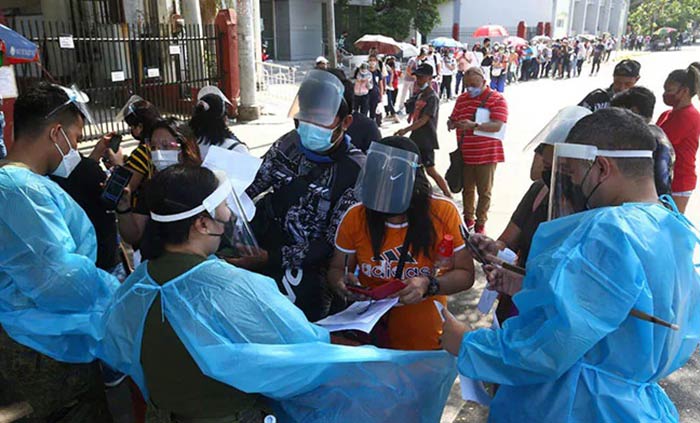
Media vita inmorte sumus (Amid life, we are in death)
by Jayantha Perera
In the second week of March 202I, I returned from Colombo and Shyamala from New Delhi to Manila. We just learned about the Philippines government’s decision to impose a total lockdown in Metro Manila starting over the weekend to combat the spread of the COVID-19 virus. The high risk of getting the virus dawned on me when I landed at Singapore airport early in the morning after having travelled overnight from Colombo. The airport was almost abandoned. A few passengers were waiting for their flights.
Nobody walked around without a mask. The flight from Singapore to Manila was a nightmare for me as the couple who sat next to me constantly coughed and cleared their throats under their masks. A harassed flight steward looked like a nurse at an intensive care hospital in personal protective equipment (PPE). She wore a mask and a face shield and moved fast from one row of seats to another, dropping brunch boxes on passengers’ tray tables. I declined my brunch box because I was scared to remove my mask to eat or drink.
During the weekend, Shyamala and I walked to the Greenway, a favourite public walking path. It was the most beautiful time in Manila. Trees were newly green, and plants were blooming with flowers. The sky was blue, and the sun shone brightly. The air was fresh. A marshal accosted us and asked us what we were doing away from home. Before we could answer, he told us we were supposed to be home. He allowed us to walk one length of the Greenway before we returned home.
We watched the TV to understand the magnitude of the pandemic and government-imposed dawn-to-night lockdown. It took us a while to understand the different stages of quarantine – ‘enhanced community quarantine’, ‘modified enhanced community quarantine’, ‘general community quarantine’, and ‘modified general community quarantine.’ Each lockdown type specifically focused on two groups of the population – the young, below 20, and the elderly, 60 or more.
As an elderly couple, Shyamala and I were supposed not to go out even to buy food and other essentials. The local Government of Bonifacio Global City (BGC) issued an official order outlining the rules and regulations for all BGC residents. At the same time, we received a memorandum from the Condominium Management Committee, which explained the local Government’s rules and regulations in detail. Only one household member, excluding the elderly, can go out at a time with the official pass issued by the local Government for a specific and essential need, such as buying food and medicine.
There were rumours that the Police had harassed several housemaids who walked in small groups with their dogs on roads and in parks. We heard some foreigners jogging on the streets were arrested for not carrying their curfew passes. Infrequently, an armoured vehicle with soldiers moved slowly on roads, announcing that residents should stay home and follow the curfew hours from 4 pm to 6 am. Manila looked like a sieged city.
Shyamala implemented a tertiary lockdown at home, a testament to her adaptability in the face of adversity. She instructed me to collect the Herald Tribune newspaper daily from the front office of the condominium, a task I undertook with caution, wearing rubber gloves and leaving the newspapers on our balcony table for three days before reading them. She also devised a meticulous system for handling groceries and other deliveries, demonstrating her resourcefulness in these challenging times. Edna, our helper, and I collected food shipments at the Delivery Collection Centre, ensuring each item was carefully placed on the balcony table for 24 hours. After that, Edna washed them with condis water.
Shyamala kept a small towel on the table at the apartment entrance for door and car keys, coins, receipts, and cell phones. She also had a large stock of masks and used them to replace overused masks of service providers, often with a rebuke. I occasionally forgot to wear my mask when I went out of the apartment to Shyamala’s consternation. She thought I was safe only if I were with her, as she carried one or two extra fresh masks and a strong antiseptic spray in her handbag.
My 70th birthday, falling on April 8, was a significant milestone, a reminder of the biblical age of three scores and ten years. Despite the heavy curfew, Shyamala was determined to celebrate. She phoned several cake shops and found one willing to deliver a jelly cake through a bicycle man, who navigated five army barriers to ensure the cake arrived intact. We could not invite friends except my father-in-law, who lived in the same building.
Shyamala and I had a lot of time because of the lockdown. Often, we asked each other whether it was a Wednesday or a Thursday? The word, weekend, disappeared from our vocabulary. In the early months of the pandemic, we spent most of our time watching the TV to learn about the virus, its transmission, and what precautions we should take. We learned we would not get large boils in our armpits or groin if we contracted the COVID-19 virus, as the Plague victims in medieval Europe did. It was a great relief to know that rats and fleas were not the vectors of the disease. The virus caused breathlessness, dry cough, and pneumonia. At least these symptoms were decent compared to that of the Plague. To my dismay, however, I learned that my vaccination against pneumonia was useless in fighting the COVID-19 virus.
Although I had more time, the time available for productive work shrank. I went for a morning walk at 6.30 when walking at a public park was allowed for elderly people. Breakfast took more than an hour. Shyamala, without fail, reminded me of the second coffee time at 10 am and was waiting for a cappuccino. After coffee, we chatted and read the ‘released’ three-day-old newspapers. By 11.00 am, I was at my desk. I started writing poetry to keep me busy for at least two hours daily.
I started paying for most services electronically. A mobile private banking service called G-Cash became popular as commercial banks ceased functioning. With G-Cash, we began to buy useless gadgets that were delivered home. Once, I enthusiastically ordered a high-speed mouthwash machine. I imagined it would be a miniature water cannon that would flush my mouth in a few seconds. However, the gadget had no mechanism to pressurise water, so it only dripped water into my mouth.
Every day, Edna proudly announced lunch was ready at noon. Shyamala collected me from my study and brought me to the dining table. After lunch, according to the home lockdown rules, it was time to rest. After a quick glance at the news on CNN and BBC, we moved to Netflix for an hour. Then was the nap time. Occasionally, I napped in the afternoon; for Shyamala, it was a daily ritual. She could not operate in the afternoon unless she got her forty winks. I usually slept 60 minutes, but only twice a week. On other days, I spent my time reading, writing, or watching National Geographic channels.
From teatime until dinner, we read or wrote letters and visited my father-in-law for a chat. Dinner was at 7 pm, and the time was sacrosanct – there couldn’t be any delay in sitting at the dinner table at 7 pm. After dinner, we watched a movie chosen by Shyamala. After the movie, we read our tablets and chatted with friends online. Shyamala retired at 10pm, and I listened to Sinhala songs on YouTube for an extra half an hour before retiring. Songs brought memories from the distant past in Sri Lanka and often made me nostalgic about Sri Lanka.
Staying at home, washing hands frequently, keeping social distance of two metres, and wearing a mask were simple rules. Doctors recommended no food or drink restrictions, for which I was grateful. The municipality allowed one hour of outdoor time for the elderly between 6 and 7 in the morning. We were supposed to stay at home or exercise closer to our residence at a designated zone for the elderly. The Greenway was out of bounds for us as we lived more than 500 metres away from it.
I woke up early to beat the 7 am deadline. If I passed the deadline, I covered my head with a large cap to conceal my white hair to avoid the attention of marshals on the road and at the park. I did not want to get accosted by a policeman because of my white hair. Shyamala was more adventurous than I was. Once, she took a cloth sack, wore her oversized sunglasses, and walked to a shop to buy cheese and good crusty bread.
Since then, she wanted me to go to the same shop to buy cheese, olives, pasta, and milk at the risk of arrest. She assured me that nothing would happen to me if I covered my white hair. Once, Shyamala opined I should dye my hair black and walk with the gait of a busy young man. She also thought revealing my legs might help hide my age, as I still had young legs! Another day, Shyamala picked up her father’s pass and took me for a long walk past a police station. I walked a few metres ahead of her, feeling safe and comfortable.
The Filipino people are known for their kindness and care for the elderly. Shyamala and I decided to live in the Philippines after retirement because of the Special Resident Retiree Visa, which gave us several privileges. We do not have to pay income tax. We get a 20% discount at coffee shops, restaurants, taxis, and cinemas. We do not stay in line to get services — getting a cab at the airport, withdrawing money at a commercial bank, or meeting an agent at a telecommunication centre.
After the lockdown, many privileges became inaccessible because the elderly were prohibited from leaving their homes. The Foreign Ministry declared Retiree Visa holders were not permanent residents of the Philippines. As a result, if we left the Philippines, we could return only when the Government allowed us to return. The underlying thought behind this policy was that retirees were a redundant segment of the local population highly vulnerable to COVID-19. The Government did not want to use its limited medical facilities and resources on the elderly. It wanted to keep such facilities and resources for income earners who fall into the age category of 21-60 years. Thus, the elderly had become a pariah group.
On TV we often saw crowded hospitals with lined-up ambulances waiting to bring COVID-19 patients to intensive care units. Several gowned and masked ‘frontline health workers’ battalions were waiting for calls from different parts of the city to transport critical patients.
Amid Corvid, the frontline health workers threatened to stage a ‘revolution’ against the Government, especially against the president, unless the Government provided relief from their non-stop services at hospitals. The president took the idea of revolution seriously and upgraded general community quarantine to “enhanced quarantine” so that health workers could break their heavy work schedule while the population lived under a total curfew. The president blamed the workers for “demeaning” the Government and giving citizens the wrong impression that the Government was not controlling the virus.
Staying at home all the time is not a common practice among the elderly. They may not go to offices or factories but are engaged in vibrant social activities, social services, and travelling. Before the pandemic hit Manila, Shyamala and I travelled abroad several times a year. Also, I travelled four to five times abroad on consultancies in a year. After 2020, the elderly became the last group eligible for overseas air travel.
We worried about our children who lived in Hong Kong, Colombo and Florida. We worried about my father-in-law, who was 93. He had done well during the first 12 months of the pandemic. Then he complained about his lingering lower back pain and shooting pains in his legs. He thought cancer had returned to his lungs and wanted to get tests done. But to visit a hospital had become an elaborate ritual because of the pandemic. Meeting a doctor and getting a few tests done took a whole day. Fortunately, he continued to spend lots of time on the stock market and took financial risks as he had done during the past 50 years. We were glad that he was not depressed.
In mid-2021, we heard that infection and death rates of COVID-19 were increasing at an alarming rate in the Philippines. For the first time, a sense of hopelessness descended upon us. With desperation came fear and uncertainty. We felt we were losing everything we possessed, including life. Slowly, a strict lockdown regime emerged as a “new normal”. It was more stringent than what we knew as “normal.” My life and perhaps Shyamala’s would never be the same again. It was a challenging but also promising thought.
Non-negotiable death
At birth
did not know my past.
Now, on the cusp of death
I do not know where I am,
where I will go.
My existence ring-fenced
I can see its contours
I cannot shrink or expand them.
An invisible hand overseeing it?
Reactivity prolongs my being
And has brought me this far
promising an eternity or nirvana
But Covid can overwrite my fate.
Oh, death, the great equaliser
You have shaken our belief
the young live long,
and the old die soon, to its core.
Now, life is short for everyone!
Appointing beneficiaries
to enjoy my wealth after my death
does not hold true any more,
as the pandemic could consume them
before it visits me.
A sneeze, a cough or a wheeze –
Is it the doorbell that calls
me – my body and mind – to face
the start of disintegration?
Epilogue
During the past several months, I have published a collection of moments from my life (the Collection) in the Sunday Island. A ‘moment of life’ is a memory capsule which records an event of one’s life – an enchantment, a challenge, a loss or an achievement. Some moments are powerful and resurface as coherent stories. Once they are juxtaposed, the narrative of life emerges. The narrative is not a constant; it changes with different permutations of moments. Thus, the narrative of life is fluid and ever-changing. The Collection presents a few moments from my life spanning over seven decades.
I am what I can remember. My memory, filled with life difficulties, hopes, worries, and achievements, is the essence of my being. Such memories are not just recollections but also fantasies and imaginations.
I have randomly selected and elaborated on a few moments from my memory that have, I thought, created my ‘self’. I could have included more life moments, but I refrained from doing so believing that the reader could construct my ‘self’ in her mind from the narrative emerging from the moments I have presented in the Collection.
A recurring theme in this Collection is grace. In many moments, guidance and assistance came in different forms and from other persons, quite unexpectedly. They helped me tackle challenges and risks and took me through difficult phases of life. I have noticed that such grace brought relief and comfort when challenges and risks seemed insurmountable. Many people came to rescue me, lead me, and protect me. At such times, I often failed to see grace in their actions. But in retrospect, I see their true motives, sacrifices, and benevolence. I appreciate and celebrate their kindness and love by narrating such moments.
Through my experiences, I have learned that planning has its limitations. In my youth, I planned to become a lawyer. But my father’s untimely death at the age of 47 completely changed my life and life chances. Some memories I have highlighted in the Collection initially looked like failures, harassment, and mistakes. But they eventually bettered my life. I also learned the value of patience and keeping my mind open to new experiences. This openness has led to better results and happiness in my life.
-
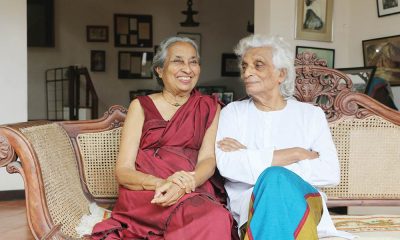
 Features3 days ago
Features3 days agoA singular modern Lankan mentor – Part I
-

 Editorial6 days ago
Editorial6 days agoFish or cut bait
-
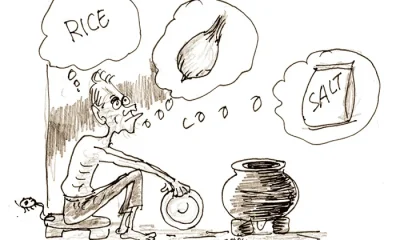
 Opinion6 days ago
Opinion6 days ago‘Not even congee now!’
-

 Editorial4 days ago
Editorial4 days agoRegime changes and scandals
-

 News5 days ago
News5 days agoWar crimes: Canada’s Conservative Party leader vows to ‘lead the world’ in seeking prosecutions against Sri Lankans
-
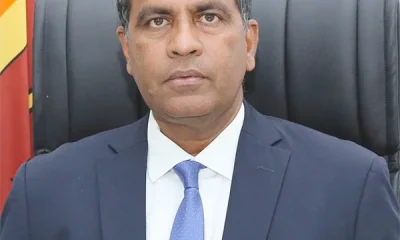
 News4 days ago
News4 days agoCustoms cleared thousands of ‘marked’ containers sans examination beginning last year
-
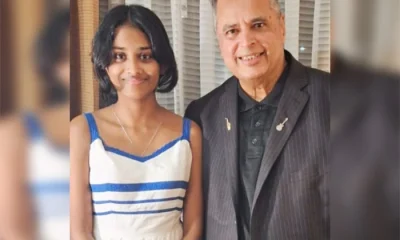
 Features6 days ago
Features6 days agoSri Lanka, here I come…again!
-
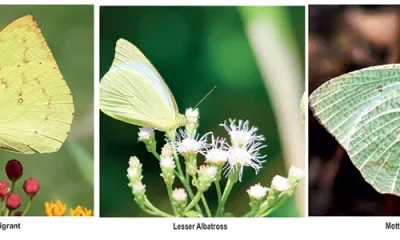
 Features4 days ago
Features4 days agoButterfly migration fading away

